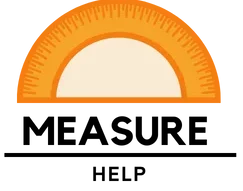Earth Control Measures
As cities grow faster and wild areas change, we need good ways to control the earth more than ever. Earth control involves methods or systems to stop or reduce the bad effects of soil washing away, dirt building up, and water flowing off. These techniques play a key role in saving natural resources and keeping nature in balance when people are building, farming, or making new towns.
Importance of Earth Control
The unrestrained erosion as well as sedimentation can bring about devastation in the surroundings. Consequently, there is a loss of fecund land, contamination of water bodies, and devastation in aquatic habitats. What’s more, when we don’t manage our earth well, it can spell trouble for developers, farmers, and local governments hitting them in the wallet and causing structural headaches down the line. This means putting good earth control measures in place isn’t just about being eco-friendly. it’s also a smart way to save money, keep landscapes intact, stop floods, and look after ecosystems.
Types of Earth Control Measures
We can group measures to control the Earth into three main types: ways to stop erosion, methods to manage sediment, and techniques to handle runoff.
- Erosion Control
Erosion control is an act of warding off detachment and graduation of soil particles through water or wind. The purpose is to uphold soil in a place so that its stability can be maintained making it less susceptible to landscape destruction.
- Sediment Control
Control of sediments refers to the handling of dirt that has previously been displaced and carried away from its original place. The process includes capturing or diverting waters containing sediments so that they do not reach water bodies or other places easy to be affected by them.
- Runoff Management
Water flow regulation, especially in urbanized or deforested regions, is a matter of interest to rainwater management. Properly managing runoff guarantees that the water is routed
away from vulnerable locations while preventing it from carrying soil particles along with it.
Common Earth Control Techniques
Various earth control methods exist for different types of landscapes and environmental challenges.
- Vegetation
The most natural and successful method for controlling soil erosion could be considered as planting vegetation. Stabilization of the soil is aided by the roots of trees, shrubs, as well as grass. Wind and water act as barriers against vegetation so that it slows down their speed and consequently their impact on the soil. Specifically, grass cover on slopes plays a crucial role in preventing erosion.
- Retaining Walls
To keep soil in place, retaining walls are built structures that prevent landslides and erosion. They are mostly used in hilly areas with a high risk of soil movement. Various materials such as concrete, stones, or timber can be used to make retaining walls and they can also be done together with drainage systems to enhance their efficiency.
- Erosion Blankets
Erosion control blankets are either synthetic or natural fiber mats that are used on bare land to avoid surficial erosion. These blankets work best on steep slopes or places where there has not been any plant growth yet. It serves as an anchor for the earth while supporting plant life roots embedded within it over time so that it acts as long-term protection against soil leaking.
- Silt fencing
Silt fabric or silt cloth is a temporary, permeable barrier erected to contain sediment on a building site or eroding area thus preventing it from being carried away. They act as a physical barrier trapping soil particles while permitting water to flow through. Silt fences are often used together with other methods of controlling silt for maximum effectiveness.
- Drainage Systems
Runoff control and soil erosion prevention heavily depend on proper drainage. Excess water has to be removed from vulnerable regions through systems of drainage such like ditches, channels, and pipes. The idea behind them is that they help reduce both volume and velocity of water moving over land thereby reducing problems related to soil loss and sedimentation.
- Mulching
The act of covering soils with either organic or inorganic materials like straw, plastic sheets, or wood chips among others is referred to as mulching. When applied, mulch serves as protection for the ground against erosion caused by winds and rain drops hitting surface aprons or sheets moving along its surface using gravity force acting on them resulting in slow down of surface runoffs due to less kinetic energy carried by these drops hence protecting against more loss of topsoil particles’ suspension within flowing liquid streams. Moreover, it holds moisture thus encouraging plant growth further reinforcing their stability within the top layers.
Legal and Environmental Guidelines
Some regulations have been enacted by governments and environmental bodies to ensure that during construction activities, land development processes, and agricultural activities, earth control measures exist as part of the program. These include laws aimed at
Challenges and Considerations
Despite the numerous benefits, implementing earth control measures can present several challenges:
Cost: Some earth control measures like retaining walls and drainage systems may be expensive to install and maintain.
Site Specific Needs: Every method does not fit all. Measures are supposed to suit each site, which has its special conditions.
Maintenance: Some earth control measures, e.g., silt fences and erosion blankets require constant checking and upkeep for them to be useful.
Future Trends in Earth Control
As a result of climate change and urbanization, there is an increasing demand for innovative earth control methods. Recently, the trend has been using biodegradable materials for erosion control products; advanced geotextiles as well as the integration of smart technology such as sensors installed along riverbanks that can help in monitoring real-time occurrences of erosion disaster risks. Besides, sustainable land development practices have gained more attention from both governments and environmental organizations.







